During the Algerian War, delegates from the International Committee of the Red Cross (ICRC) carried out ten detention missions in the country between 1955 and 1962, followed by one more in 1963 – a special mission to visit imprisoned Algerian fighters serving in the French army and to look for missing Europeans.[1] Each mission consisted of numerous visits to places of detention, mostly in Algeria, although some took place where Algerian nationalists were being held in France, Morocco and Tunisia. The visiting delegates followed a specific procedure: when they arrived on site, they would establish contact with the relevant civilian and military authorities and request authorization to visit detainees from the regional prefectures. The French authorities would then draw up a list of camps and take the delegates to their destinations via either ground or air transport. At the camps, the delegates would meet with the camp commander, tour the facility and hold private discussions – “interviews without witnesses” – with the detainees of their choosing. The delegates would include a doctor tasked with assessing the detainees’ state of health. Following their visit, the delegates would write up a report for the camp commander that included their findings along with recommendations on the camp’s management and facilities[2] Photographs taken during some of the camp visits show the conditions in which the detainees were being held. In this article, we attempt to provide a deeper understanding of the visits and what the delegates encountered, using those photos as waypoints.
The ICRC holds 400 photos from the Algerian conflict, and 300 of them were taken during the delegates’ detention visits. Over 100 of these have never been published in the ICRC’s audiovisual archives portal because the photos lacked descriptions when they were digitized. The project on which this article is based had several aims. First, to present the photos in the ICRC’s collection that document the ten detention missions our delegates carried out in Algeria; this collection is incomplete, because the ICRC lacks photos from the first, ninth and tenth missions, although background information is provided in the dropdown boxes below. Second, to expand and structure the collection by cross-referencing some 30 previously undescribed photographs with the various detention missions; they can now be viewed in the ICRC’s audiovisual archives portal. Our third and final aim was to expand the descriptive component of these photos: we flesh out the context in which the images were taken by juxtaposing them with excerpts from the delegates’ detention reports, which the public can consult in the ICRC’s general archives.
LIST OF PLACES OF DETENTION VISITED AND PHOTOGRAPHED BY THE ICRC
AC: Assembly centre / STC: Screening and transit centre / MIC: Military internment centre
| ICRC Mission | Dates | Places of detention visited |
|---|---|---|
| Second mission | 22.04.1956
28.06.1956 |
Berrouaghia (AC),Djorf (AC) |
| Third mission | 15.10.1956
03.11.1956 |
Berrouaghia (AC), Djorf (AC) |
| Fourth mission | 15.05.1957
06.07.1957 |
Djorf (AC), Mostaganem prison, Chanzy (STC), Meffrouch (STC) |
| Fifth mission | 27.11.1957
28.02.1958 |
Bir el Ater (STC), Barika (STC), El Ma el Abiod (STC), Baudens (STC), Lamoricière (STC), Sainte-Barbe du Tlelat (STC), Aïn Frass (STC), Bossuet (AC) |
| Sixth mission | 04.12.1958
23.12.1958 |
Ksar-Thir (MIC), Bône “Ferme des Anglais” (MIC) |
| Seventh mission | 15.10.1959
27.11.1959 |
Kenadsa (STC), Ksar-Thir (MIC), Paul Cazelles (AC) |
| Eighth mission | 25.01.1961
23.02.1961 |
Burdeau (MIC), Ferme Chenu (STC), Barika (STC), Biskra (STC), Eugène Etienne (STC), Saint-Denis-du-Sig (STC) |
THE ICRC’S MISSIONS THROUGH THE EYE OF THE CAMERA
FIRST MISSION
⇒ NO PHOTOS AVAILABLE
The first of the ten detention missions in question was a joint one in both Algeria and Morocco, where people arrested following the “events” were being held. The ICRC clearly laid out its intentions for the French government:
“The International Committee expressed its wish to be provided a list of those arrested following the events, to be allowed to visit the internment and detention centres holding those individuals, to be permitted to facilitate, if necessary, the exchange of correspondence between these detainees and their families, and, lastly, to consider, subject to the same condition, whether to distribute assistance to them or their families.” A CICR, B AG 251 008-001
The French government was not inclined to accept all of these requests. Throughout the one-month mission, the delegates were rebuffed numerous times, often when it came to the right to hold interviews without witnesses. To get around uncooperative camp commanders, the delegates were routinely forced to petition the competent examining magistrates. All that red tape hindered the delegates’ progress during their mission and prevented them from getting the full picture of detention conditions. Their observations were necessarily superficial and issued with reservations.
SECOND MISSION (click here to see all photographs)
Berrouaghia assembly centreLocation: Algiers region
Visited on: 23rd of May 1956
Delegates: Messrs Pilloud, Gaillard and Willener
Camp's headcount: 545
“The centre is set up in a modern building (although work on the interior has not yet been completed) that was built by the penitentiary department. It sits within the Berrouaghia penitentiary and has been designed to serve as a clinic for detainees with tuberculosis from prisons all over Algeria. Given the lack of space, however, the building is used to meet the needs of the internment centre. […] Each person staying there has a cot, a cotton mattress and 2 blankets (4 in the winter); the cots are lined up very close together and can be found throughout the building, including in both hallways and landings. This situation is currently unsatisfactory, and we were told it would be improved.” A CICR, BAG 251 008-002
Djorf assembly centreLocation: Constantine Province
Visited on: 5th of June 1956
Delegates: Messrs Gaillard and Willener
Camp's headcount: 593
“Setting aside the question of hygiene and the relatively harsh weather (which is surely not a problem for the Algerians), our impression of the Djorf centre is quite good – certainly better than the one in Berrouaghia. Criticisms about the Djorf centre that sometimes appeared in the press did not strike us as particularly justified. Djorf really seems like an internment camp, but the situation there could become satisfactory if a number of improvements were made (hygiene, showers, flies, upgrades to the kitchens, library, etc.). We consider the detention conditions there to already be fully humane.” A CICR, BAG 251 008-002
THIRD MISSION (click here to see all photographs)
Berrouaghia assembly centreLocation: Algiers region
Visited on: 19th of October 1956
Delegates: Messrs Gaillard and Gailland
Camp's headcount: 879
“Living conditions were improved following the delegates’ first visit, with the construction of five new bunkhouses. The old bunkhouses aren’t as overcrowded now […]. However, there are not nearly enough showers, and the detainees only take one or two showers per month. What’s more, hot showers were not possible. […] Many of the detainees also informed us that they were mistreated when they were arrested and while being questioned by the intelligence police, the judicial police and the domestic surveillance agency. We examined numerous detainees and observed unmistakable signs of abuse, such as cigarette burns, scars from wrist or ankle chains or ties, and superficial burns from electrodes.” A CICR, B AG 251 008-004Djorf assembly centreLocation: Constantine Province
Visited on: 31st of October 1956
Delegates: Messrs Gaillard and Gailland
Camp's headcount: 550
“During our interviews, the detainees complained mostly of a lack of blankets and sheets for those who were sick, the lack of heating and bed linens in the infirmary; the same food all the time, consisting of stew or couscous; and no coffee with milk in the morning. […] I was also given a handwritten list of detainees who had suffered abuse in the military camps or at the hands of the judicial police, the intelligence police or the domestic surveillance agency; those individuals showed up at the Djorf infirmary. I examined a few of them and made the same objective observations as in Berrouaghia camp.” A CICR, B AG 251 008-004
FOURTH MISSION (click here to see all photographs)
Djorf assembly centreLocation: Constantine Province
Visited on: 22nd of May 1957
Delegates: Messrs Gaillard and Gailland
Camp's headcount: 606
“Food. […] Since our previous visit, the detainees were allowed to manage their food themselves. They are involved in the shopping in M’sila, with a detainee accompanying the manager. This system is fully satisfactory. Kitchens. The installation of a modern kitchen with oil-burning stoves was a major improvement. A food storage room was also set up. Mosquito netting was installed in the meat and vegetable storeroom. Because of the heat, a refrigerator would be a useful addition to the kitchen. Canteen. The detainees organize and run the canteen by themselves.” A CICR, BAG 251 008-005Mostaganem prisonLocation: Oran region
Visited on: 4th of June 1957
Delegates: Messrs Gaillard and Gailland
Camp's headcount: 535
“Housing. The prison is set up inside an old Turkish fort that has been adapted for this purpose, but there’s no more room for improvement or expansion [editor’s note: the capacity is 236]. Two new sleeping quarters were opened in the past year. Yet the facility is still extremely overcrowded, and the ventilation and per capita air volume are substandard (around 3 to 4 cubic metres). A solution should be found quickly before the weather turns hot. […] In this prison, rapid overcrowding is the main problem for detainees but also for the prison’s administrative staff, who are too few for the large number of detainees.” A CICR, BAG 251 008-005
Chanzy screening and transit centreLocation: Oran region
Visited on: 5th of June 1957
Delegates: Messrs Gaillard and Gailland
Camp's headcount: 39
“Housing. 6 sufficiently large, lit and ventilated rooms in an existing house. Several rooms used for sleeping. Inner courtyard with a well. Bedding: mats, blankets. […] Interviews without witnesses. Complain that there aren’t enough blankets. Are treated well and have no other complaints. Are worried about how their families are doing.” A CICR, BAG 251 008-005
Meffrouch screening and transit centreLocation: Oran region
Visited on: 7th of June 1957
Delegates: Messrs Gaillard and Gailland
Camp's headcount: 38
“Housing. A military hut, like the ones used by the French army. Spacious, well-ventilated, with the necessary air volume. Hygiene. The detainees wash themselves in a small stream near the camp, using the soap provided. Outdoor toilets. Food. Prepared in the military kitchen. The food is the same as what’s eaten by the soldiers, but the rations are smaller given the detainees’ current food allowance. […] Interviews without witnesses. Complain that the food rations are too small. Are treated well and have proper housing. Have not been mistreated in any way. Have asked for the right to more visits. Interview with the sector commander. The food problem is being addressed immediately, as the food allowance was increased from 140 francs to 240 francs.” A CICR, BAG 251 008-005
FIFTH MISSION (click here to see all photographs)
Bir el Ater screening and transit centreLocation: Constantine Province
Visited on: 10th of December 1957
Delegates: Messrs Gaillard and Gailland
Camp's headcount: 51
“Housing. 4 tents, with a stove. 1 cot with a straw mattress (provided just a few days ago) and 3 blankets per prisoner. […] Food. Improved in the past few days. Prepared by the prisoners, rations provided by the soldiers. […] Clothing. Several days before our visit, the prisoners were given military items (shoes, shirt, pullover and smock). […] Overall impression. Not a bad impression, but it would be good if the tangible improvements that were recently made are not subsequently changed.” A CICR, BAG 251 008-006
Barika screening and transit centreLocation: Constantine Province
Visited on: 9th of December 1957
Delegates: Messrs Gaillard and Gailland
Camp's headcount: 33
“Location. Old farmhouse in the village. Large inner courtyard. […] Housing. Rooms accessible from the inner courtyard. The rooms are very clean and well-ventilated, and the kitchen is in a second courtyard. Acceptable population density. Each internee has a mat, a straw mattress and a blanket. […] Interviews without witnesses. During the routine interview, several French-speaking internees noted that they are very well-treated, well-fed, and have decent housing. They raised no complaints. The long-term detainees wish to receive visits from family members. This request was passed along to the sector commander, who has approved it.” A CICR, BAG 251 008-006
El Ma el Abiod screening and transit centreLocation: Constantine Province
Visited on: 10th of December 1957
Delegates: Messrs Gaillard and Gailland
Camp's headcount: 39
“Housing. 2 tents. 1 cot (recently provided) and 4 blankets per prisoner. […] Interviews without witnesses. With 1 group of prisoners. They do not complain about the food. They were given the beds not long ago. They reported: – no family parcels or visits, – no soap–, – complain about being beaten at times, at the worksites, – request clothes. […] Final comments. General impression not very good.” A CICR, BAG 251 008-006Baudens screening and transit centreLocation: Oran region
Visited on: 6th of February 1958
Delegate: Mister Gailland
Camp's headcount: 72“Housing. The rooms are heated, lit and ventilated and have good air volume. Acceptable population density. The sleeping materials consist of 1 mat and 3 blankets per man. The detainees have camp materials and a shelf for their personal belongings. The premises are very clean. […] Final comments. There was also a section for women. It included a small courtyard and sanitary facilities. The camp’s material and psychological conditions are very good.” A CICR, BAG 251 008-006
Lamoricière screening and transit centreLocation: Oran region
Visited on: 14th of February 1958
Delegate: Mister Gailland
Camp's headcount: 216
“Housing. Permanent bunkhouses with whitewashed walls. The rooms are large enough and sufficiently ventilated and lit. The population density is acceptable, with enough air volume. The sleeping materials consist of hard boards with straw, mats and blankets. Camp-style items are available. Each room is heated. […] Interviews without witnesses. We spoke with a group of around 30 internees. They are generally satisfied with the material and psychological conditions at the camp. No complaints were aired.” A CICR, BAG 251 008-006
Sainte-Barbe du Tlelat screening and transit centreLocation: Oran region
Visited on: 9th of February 1958
Delegate: Mister Gailland
Camp's headcount: 46
“Housing. The camp is only 15 days old. At this point it consists of 4 military tents, but permanent buildings are already being built. Inside the tents, everything is set up in perfect military fashion. Wooden boards, straw mattresses, blankets, camp-style items. Everything is very clean. […] Interviews without witnesses. We spoke with the 4 tent leaders, who were previously at the Saint Denis du Sig camp. Based on what they said, the material and psychological conditions in both camps are excellent. The guards and officers always maintained a humane – even fraternal – attitude. No complaints were mentioned. […] Final comments. The conditions are good. We handed over 50 packs of cigarettes for the detainees.” A CICR, BAG 251 008-006
Aïn Frass screening and transit centreLocation: Oran region
Visited on: 6th of February 1958
Delegate: Mister Gailland
Camp's headcount: 31
“Housing. The sleeping quarters consist of one room that is well-lit, heated and clean, with adequate air volume. Acceptable population density. Mats, blankets, camp-style items are available. […] Comments. The camp’s detention conditions are good.” A CICR, BAG 251 008-006
Bossuet assembly centreLocation: Oran region
Visited on: 7th of February 1958
Delegate: Mister Gailland
Camp's headcount: 1,600
“Free time and physical exercise. Radio broadcast. French classes. Arabic classes were cancelled. The internees are free to walk around in a large courtyard. There is a library in the old camp. Another one will be set up in the new camp. […] During the interviews without witnesses, some internees complained of being very frequently confined to their cells: when this happens, the internees are often subjected to beatings or severe food restrictions that sometimes mean no food for 3 or 4 days at a time. […] During our visit we saw that the internees’ material conditions were satisfactory, but we feel that their treatment and psychological conditions must be improved […].” A CICR, BAG 251 008-006
SIXTH MISSION (click here to see all photographs)
Ksar-Thir military internment centreLocation: Constantine Province
Visited on: 15th of December 1958
Delegates: Messrs Gaillard and Vust
Camp's headcount: 185
“Releases: Several prisoners have already been released since the military internment centre was set up. 5 prisoners were also released during our visit […] We attended the release ceremony for the 5 men. […] During our camp visit, the prisoners were wearing new civilian clothes given to them by the prison administration. In addition, military transport vehicles were provided to take them to their families in Bougie, Beni-Ourtilane and Batna region.” A CICR BAG 225 008-008
—“These releases were planned to coincide with our visits […], which the officers in charge made clear in their speeches during the two short ceremonies. The two releases took place in front of the gathered prisoners, with around 10 superior officers attending each one. No representatives of the press were invited, although military photographers did a full reportage on the two ceremonies.” A CICR B AG 251 008-007
Bône “Ferme des Anglais” military internment centreLocation: Constantine Province
Visited on: 16th of December 1958
Delegates: Messrs Gaillard and Vust
Camp's headcount: 160
“Housing: The sleeping quarters were significantly improved through the installation of doors, windows and moveable partitions. Two new permanent buildings were built up against one of the walls in the courtyard. The walls were whitewashed. Each of the detainees, all captured combatants, have a camp bed, a straw mat and four blankets. Their housing conditions are fully satisfactory. […] Releases: […] during our visit to the military internship centre we attended a small ceremony in which the following 5 combatants were released […] We watched as the first two were given money to pay for their trip home to their families. They were also provided with the papers they needed. The last three, who were from near Bône, were driven to their homes in military cars. They were all dressed in new civilian clothes provided by the prison administration.” A CICR B AG 225 008-008
SEVENTH MISSION (click here to see all photographs)
Kenadsa screening and transit centreLocation: Constantine Province
Visited on: 12th of November 1959
Delegates: Messrs Gaillard and De Chastonay
Camp's headcount: 216
« Interviews without witnesses: […] Everyone feels that they are treated well, and there are no complaints about the screening and transit centre. […] However, several internees claimed to have been tortured with water and electricity when they were questioned a few months ago in Bidon 2, near Colomb-Béchar, where they also say they were mainly confined to their cells. […] This camp seems very good. As to the claims of mistreatment, the commander representing General Gribius (commanding officer of the Colomb-Béchar territory), who was present during our visit, acknowledged that that may have been true six months earlier, but that very strict measures have been taken since then and such deplorable practices have been ended for good.” A CICR BAG 251 008-008
Ksar-Thir military internment centreLocation: Constantine Province
Visited on: 5th of November 1959
Delegates: Messrs Gaillard and De Chastonay
Camp's headcount: 478
“Final comments: Good overall impression. The material conditions – housing, hygiene, food and work – are all quite good. The existence of workshops and occupational training courses is worth mentioning. We attended the release ceremony for 37 prisoners. All the newly released men joined military formations of the French army, but we’ve been told that most of them can request permanent release in a short time if that’s what they want. The ceremony began with the flag-raising. Several of the released men addressed words of encouragement to their mates, and the ceremony ended with speeches by the camp commander and Colonel Ducousseaux.” A CICR BAG 251 008-008
Paul Cazelles assembly centreLocation: Algiers region
Visited on: 22nd of October 1959
Delegates: Messrs R. Vust and L. Vust
Camp's headcount: 1,370
“Housing. Some four-dozen sheet-metal bunkhouses with concrete flooring. 40 men per bunkhouse. Double beds, mats, mattress covers (currently without fur), three blankets. […] Free time and physical exercise. Library with 300 books. Courses are taught by internees. Football, volleyball, radio and movies available. Treatment and discipline. The centre is guarded by a detachment from the French National Polices reserves. It’s divided into four blocks: Block A has “hardened” internees; blocks B and C have “regular” internees who could be “redeemed”; block D holds those slated for release.” A CICR BAG 251 008-008
EIGHTH MISSION (click here to see all photographs)
Burdeau military internment centreLocation: Oran region
Visited on: 30th of January 1961
Delegates: Messrs Gaillard and De Chastonay
Camp's headcount: 747
“The camp is divided into three separate blocks. Each block is associated with the strength of conviction of the captured combatants that it holds, along with their “psychological” evolution (hardened, less hardened, soft). The captured combatants are assigned to blocks by the lieutenant in charge of psychological evaluations at the military internment centre, with the help of a number of soldiers. […] Punishment in cells. Nearly all of the captured combatants complained about how easily they’re confined to their cells as punishment, at times for quite long periods and with food restrictions. Some of them report being put naked (in just their underwear) and without a blanket in these cells.” A CICR BAG 251 008-010Ferme Chenu screening and transit centreLocation: Algiers region
Visited on: 6th of February 1961
Delegates: Messrs Gaillard and De Chastonay
Camp's headcount: 80
“Medical and dental care. Compulsory medical visit, when entering and leaving the screening and transit centre; Daily visit by the doctor; Treatment is provided at the neighbouring military infirmary; Hospitalization at Blida hospital. […] Final comments. Our visit to this screening and transit centre made a good impression. It’s clear that a major effort was made to improve the conditions in which the internees are being temporarily held.” A CICR BAG 251 008-010
Barika screening and transit centreLocation: Constantine Province
Visited on: 17th of February 1961
Delegates: Messrs Gaillard, De Chastonay and Vust
Camp's headcount: 126
“Housing. 4 tents with turf covering the sides. Straw replaced every month, jute mat and 2 blankets per man. Outdoor lighting. No heating. A tent is used for praying during Ramadan. One houses those about to be released (29 such individuals). The others house the captured combatants and those held separately (cases still being handled by the prosecutor). […] Interviews without witnesses. We held interviews with representatives of those about to be released, those held separately, and the captured combatants. No complaints apart from one from the captured combatants, who cannot write to their families because they don’t have the money for stationery and stamps.” A CICR BAG 251 008-010Biskra screening and transit centreLocation: Constantine Province
Visited on: 17th of February 1961
Delegates: Messrs Gaillard, De Chastonay and Vust
Camp's headcount: 176
“Another visit to cells in the 2nd Office in Biskra. These cells are attached to a villa (Villa des Roses) in the town of Biskra. There are 9 cells. Many of them are dark and overly cramped, much too small to hold 2 or 3 internees, as is the case now. They are so small (1 m x 2 m), that it must be impossible to lie down. Several cells have no blankets at all, and others are totally dark and airless. We spoke individually with several internees, who don’t dare say anything out of fear. But they all complained that they can’t get fresh air or exercise. How long the internees will spend in these cells after being arrested is not determined in advance but depends on the needs of the inquiries. They often spend at least ten days there, in detention conditions that we consider well below the minimum requirement.” A CICR BAG 251 008-010Eugène Etienne screening and transit centreLocation: Oran region
Visited on: 31st of January 1961
Delegates: Messrs Gaillard and De Chastonay
Camp's headcount: 18
“Location. This is the rehabilitation and pre-release centre for women in the west Oran zone […]. Releases. In 1960, 161 women were interned. In 1960, 136 women were released. Other transfers: 4 to internment centres, 20 to the justice system, 1 deported to Morocco. […] Free time and physical exercise. School classes taught by a local woman who fought on the French side, radio in the camp, travelling cinema once a week. […] Interviews without witnesses. Since none of the women spoke French, we interviewed three of them with the help of a young Muslim nurse who served as our interpreter. The internees have no complaints; they feel they are well-treated and just want to be released.” A CICR BAG 251 008-010Saint-Denis-du-Sig screening and transit centreLocation: Oran region
Visited on: 2nd of February 1961
Delegates: Messrs Gaillard and De Chastonay
Camp's headcount: X (unknown)
“Housing. 8 permanent buildings, 7 cells. Each internee has a mat and two blankets. No heating, but the weather is mild. Electric lighting. […] Interviews without witnesses. No running water. Open water tank, with no cover. Several internees complain of diarrhea.” A CICR BAG 251 008-010
NINTH MISSION
⇒ NO PHOTOS AVAILABLE
During their ninth mission, the ICRC delegates were able to verify compliance with the various regulations that the French army put in place in spring 1961 on how the screening and transit centres, internment centres and military internment centres were to be organized and run. These regulations served as a framework for how places of detention should operate and be organized internally; however, in their 51 visits, the delegates quickly saw that several camp leaders did not apply the regulations and that there were still many complaints of torture. This mission also brought to light the fact that Muslims deported from France were kept in screening and transit centres instead of being held under house arrest. The following remark conveys the ICRC’s growing awareness of the potential violence that could arise in the country as it nears independence:
“The ICRC should be aware that the day Algeria becomes independent, in one form or another, the situation will go from serious unrest to open civil war. Here too, the ICRC will be expected to plan ahead and lay the groundwork.” A CICR, B AG 251 008-011
TENTH MISSION
⇒ NO PHOTOS AVAILABLE
The tenth mission was unusual because the delegates visited only nine places of detention, and because of the types of detainees visited. The focus of the mission was on “militant” prisoners and internees, the large majority of whom were European in origin. This mission took place just a few months after the Evian Accords were signed, against a backdrop of violence and reprisals. In visiting the detainees, the ICRC noted that their detention conditions were globally satisfactory, as numerous camps were refurbished before the European detainees arrived. The numbers of complaints of brutality had also dropped sharply. The detainees’ main concern was with their future in Algeria once a sovereign state had been declared. The ICRC delegates themselves grappled with that issue:
“According to unofficial information we were able to gather, they [the European detainees and internees] will not be subject to the authority of the future Algerian government. At this point, the only ones still in prison in Algeria are those charged with a crime and awaiting trial in one of the public courts. Those who are not sentenced before the end of the month will be repatriated. Those already sentenced are immediately transferred to France.” A CICR B AG 251 008-016
LIST OF ACRONYMS
Places of detention:
AC: Assembly centre: a camp holding people sentenced to monitored house arrest for an indeterminate period under a prefectural decree.[3]
STC: Screening and transit centre: a military-run camp for temporarily detaining people suspected of supporting the independence movement and belonging to the National Liberation Army.[4]
MIC: Military internment centre: camp de détention géré par les militaires où sont internées les personnes prises les armes à la main (voir définition PAM).[5]
Belligerents:
FLN: National liberation front: an armed rebel Algerian independence movement.
ALN: National liberation army: the FLN’s armed wing.
OAS: Organisation de l’armée secrète: a French underground terrorist organization created in 1961 with the aim of maintaining France’s presence in Algeria.
Detainee category:
Captured combatants: starting in 1958, “combatants captured with weapons in hand” – shortened to “captured combatants” in this article – were processed in a screening and transit camp and then transferred to a military internment centre.
TO LEARN MORE
– THE ICRC’S ROLE DURING THE ALGERIAN CONFLICT –
The challenge of categorizing the conflict
The number of terms used to refer to the Algerian War – “the events in Algeria”, “national liberation war”, “civil war”, “war of decolonization” – reflects its complexity in terms of both the wide range of parties involved and its status under international law. Because France did not consider it an armed international conflict, the four Geneva Conventions could not be applied. It wasn’t until 1956 that France agreed that Article 3 common to the Geneva Conventions applied to the conflict.[6]
This terminological conundrum was apparent at the 19th International Red Cross Conference in 1957, where the unanimously approved resolution calling for increased support for Algerian refugees in Morocco and Tunisia uses the terms “events” and “war” just two paragraphs apart. One could read in these terminological choices a desire to align with France to ensure the ICRC could carry out its work smoothly, but also the need to appeal to the international community in an effort to encourage funding. In 1958, the year the Provisional Government of the Algerian Republic was founded, the ICRC settled on the terms “conflict” and “war” to describe what was happening in Algeria in both its internal and public communications, forgoing the term “event”.
New Delhi. XIX International Conference of the Red Cross and the Red Crescent. 1957.
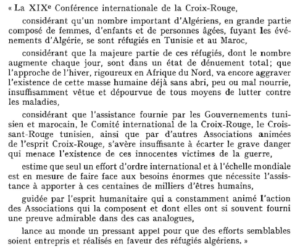 Resolution to support Algerian refugees in Morocco and Tunisia, 1957 ICRC’s annual report, p. 11.
Resolution to support Algerian refugees in Morocco and Tunisia, 1957 ICRC’s annual report, p. 11.
Relief for resettled groups and refugees
The ICRC’s humanitarian work during the Algerian War focused on detention-related activities and relief. The organization coordinated with a number of National Societies, including the French Red Cross, for civilian relief in Algeria, but also the Tunisian Red Crescent and Moroccan Red Crescent.
Starting in 1955, France sought to stifle nationalist and independence sentiment by forcing rural communities to move from their villages to resettlement camps. Some of these camps were located close to cities, while others were in remote areas. At first, they received little attention from the ICRC, which was busy visiting detainees; more surprisingly, they got no help from the French Red Cross. The National Society was serving as an auxiliary to the French government and to the army’s health service. Its efforts to provide relief to resettled Algerians [7] were sporadic until 1959, when the French Red Cross began providing large-scale assistance under public pressure – after the press started reporting on the difficulties faced by “resettled groups”. Mobile teams were formed and crisscrossed the country in five-tonne trucks that, with their medical equipment, served as field hospitals.
But what were the housing and sanitary conditions in the resettlement camps? Worryingly bad, if we are to believe the mission report from delegate Jérôme Santandrea in the winter of 1962:
“A very low percentage of the resettlement centres had permanent structures. Centres of this type are located in regions where the residents will be able to fend for themselves once the hostilities end; in other words, they have arable land. But the large majority of resettlement centres are made up of huts. The hut walls were fashioned from clay and straw bricks, the roofs were made from thatch or branches, and there were no floors. People lived in them alongside their animals. […] The impression I got from visiting the people in these centres was that they lacked the basic necessities. Infant mortality is high, and this can be attributed to poor hygiene and nutritional deficiencies. I observed a lot of cases of tuberculosis, which spreads all the more easily as the sick refuse to be separated from their loved ones in order to receive treatment. Rickets and conjunctivitis are also particularly widespread.” A CICR, B AG 251 008-012
Distribution of relief supplies in a resettlement camp (1962) and distribution of condensed milk to resettled groups in the Duperré region (1958).
FOOTNOTES
[1] French Muslims who fought as auxiliaries to the French army during the Algerian conflict were called harkis. When the country achieved independence, the harkis were the target of reprisals from the new government but also from some of their compatriots. In the ensuing months, numerous harkis – together with Europeans still in Algeria – were disappeared, killed or imprisoned, which led the ICRC to carry out one last mission in the country. Priority was given to ascertaining the fate of disappeared Europeans, however, rather than that of harkis. Here are some links to learn more about harki involvement in the Algerian War: https://harkis.gouv.fr/les-harkis/les-harkis-qui-sont-ils ; https://imagesdefense.gouv.fr/harkis-guerre-algerie-tragedie-abandon-reparations
[2] Perret, Françoise. “L’action du Comité international de la Croix-Rouge pendant la guerre d’Algérie (1954–1962).” International Review of the Red Cross 86.856 (2004), pp. 924-925.
[3] As part of its second mission, the ICRC visited internment centres for the first time. The categories of detainees and the reasons they were being held in these camps varied and were relatively arbitrary. During their visits, ICRC delegates noted three reasons for which people were being detained: “Some were arrested for their political past. They are being interned preventively. The aim is to prevent them from joining the rebel side. Others are being held here as punishment, because they were involved in some sort of anti-government activity that’s not specific enough for a criminal prosecution.” And then there are former prisoners who have completed their sentences yet were being held because they were considered potentially dangerous. Besnaci, Fatima. “Prisons et camps d’internement en Algérie: les missions du Comité international de la Croix-Rouge (CICR) dans la guerre d’indépendance, 1955-1962.” éditions du croquant (2018), pp. 102-103.
[4] It was by chance that the ICRC discovered these screening and transit centres during its second mission, but it wasn’t until the fourth mission that delegates were provided with a list of these camps and approval to visit. On paper, these internees were to be held for two to three months, after which they were to be either prosecuted or sent to an internment camp. The detention conditions in these centres, which were described as interrogation centres, gave rise to complaints from some internees that they’d been physically abused.
[5] The first of these camps was set up in 1958 by General Salan, the commander of French forces. The decision to create military internment centres came after numerous discussions with the ICRC, which felt that captured combatants (i.e. combatants captured with weapons in hand) should be treated differently from those who committed terrorist acts. The ICRC’s intention was for captured combatants to be treated as prisoners of war, who are protected by the Third Geneva Convention. In reality, France was hostile to the idea of categorizing the Algerian conflict as an international conflict and, accordingly, did not want to assume responsibility for treating captured combatants like prisoners of war.
[6] “In truth, it took until 23 June 1956 for the French government – acting through Guy Mollet, the French prime minister – to officially recognize the applicability of common article 3 to the conflict in Algeria. But Algerians, asserting the international nature of the conflict, demanded that all four Geneva Conventions be applied. This point was of considerable importance, in particular as it affected combatants’ individual responsibility. That’s because soldiers in international conflicts are viewed as instruments of state and bear no personal responsibility for taking part in the fighting, so long as they comply with the laws and customs of war. In non-international conflicts, on the other hand, states reserve the right to put down a rebellion using instruments of criminal law; that means a rebel can be prosecuted simply for participating in hostilities. With the criminal justice system, the state has powerful instruments to put down rebellions, yet that approach obviates the distinction between combatants who act in compliance with the laws and rules of war and those who don’t.” Perret, Françoise, ibid, p. 927.
[7] “The ‘resettlement’ of civilians was one of the main approaches France took to combating the National Liberation Front (FLN) in rural areas, where this party enjoyed growing influence over the Algerian people starting in 1955. […] From a strategic point of view, resettlement consisted of first prohibiting anyone from being or moving around in pro-nationalist zones, and then removing the people who lived there to sites overseen by the army.” (p.29). “Resettlement was not an exclusively military operation: it was a place where rural people could be brought under total control. The army and the administration chose the term ‘centre’, an administrative euphemism for ‘camp’. […] This system relied on the presence of the army, which managed and supervised the camp and applied strict rules on entering and leaving the camp and on discipline among those resettled (although these rules varied from camp to camp).” (p.31) Sacriste, Fabien. « Les « regroupements » de la guerre d’Algérie, des « villages stratégiques » ? », Critique internationale, vol. 79, no. 2 (2018), pp. 29-31.
BIBLIOGRAPHY
Besnaci-Lancou, Fatima. “Réfugiés et détenus de la guerre d’Algérie: mémoires photographiques et historiques.” Les éditions de l’Atelier (2022).
Besnaci-Lancou, Fatima. “Prisons et camps d’internement en Algérie: les missions du Comité international de la Croix-Rouge (CICR) dans la guerre d’indépendance, 1955-1962.” éditions du croquant (2018).
Király, Clara. “L’action du CICR pendant la guerre d’indépendance algérienne (1954-1962)” CROSS-files (2023). L’action du CICR pendant la guerre d’indépendence algérienne | Cross-Files | ICRC Archives, audiovisual and library.
Perret, Françoise. “L’action du Comité international de la Croix-Rouge pendant la guerre d’Algérie (1954–1962).” International Review of the Red Cross 86.856 (2004).
Sacriste, Fabien. “Les « regroupements » de la guerre d’Algérie, des « villages stratégiques » ?” Critique internationale, vol. 79, no. 2 (2018).
“Le CICR et le conflit algérien”, Comité international de la Croix-Rouge, Genève (1962).
PRIMARY SOURCE DOCUMENTS
A CICR, B AG 251 008-001. Mission de détention de Jean-Pierre Maunoir et Pierre Gaillard au Maroc et en Algérie, du 28 février au 18 avril 1955. Rapports de visite.
A CICR, B AG 251 008-002. Deuxième mission de détention en Algérie de Claude Pilloud, René Bovey, Pierre Gaillard, et des Dr Hans Willener et Louis-Alexis Gailland, du 22 avril au 28 juin 1956, première partie. Rapports médicaux.
A CICR, B AG 251 008-004. Troisième mission de détention de Pierre Gaillard et du Dr Louis-Alexis Gailland, du 15 octobre au 3 novembre 1956. Rapports de visite.
A CICR, B AG 251 008-005. Quatrième mission de détention de Pierre Gaillard et du Dr Louis-Alexis Gailland, du 15 mai au 6 juillet 1957. Rapports de visite.
A CICR, B AG 251 008-006. Cinquième mission de détention de Pierre Gaillard et du Dr Louis-Alexis Gailland, du 23 novembre au 21 décembre 1957. Rapports de visite.
A CICR B AG 251 008-007. Sixième mission de détention de Pierre Gaillard, du 4 au 23 décembre 1958. Rapports de visite.
A CICR B AG 251 008-008. Septième mission de détention de Pierre Gaillard, Roger Vust, Laurent Vust et du Dr Jean-Louis de Chastonay, du 15 octobre au 27 novembre 1959. Rapports de visite.
A CICR B AG 251 008-010. Huitième mission de détention de Pierre Gaillard et Jean-Louis de Chastonay, du 24 janvier au 23 février 1961. Rapports de visite.
A CICR, B AG 251 008-011. Neuvième mission de détention de Pierre Gaillard, de Roger Vust et du Dr Jean-Louis de Chastonay, du 24 novembre au 15 décembre 1961.
A CICR B AG 251 008-016. Dixième mission de détention de Michel Martin, de Roger Vust et du Dr Jean-Louis de Chastonay, du 25 mai au 29 juin 1962.
A CICR B AG 225 008-008. 1958, rapports des missions du CICR en Algérie. Rapport de visite.





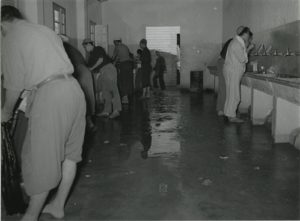
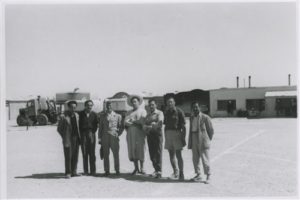
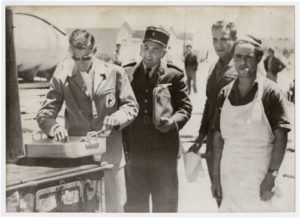
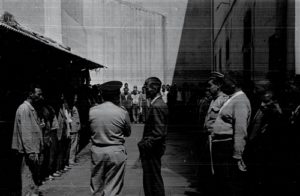
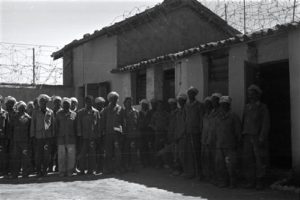
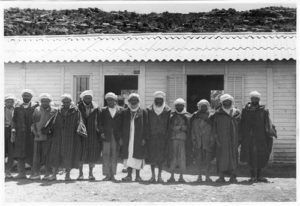
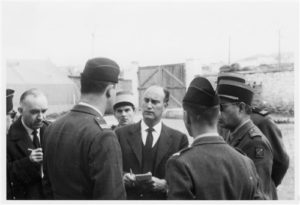

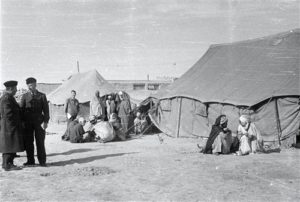



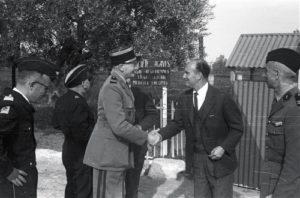
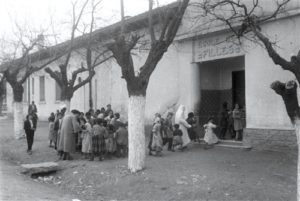

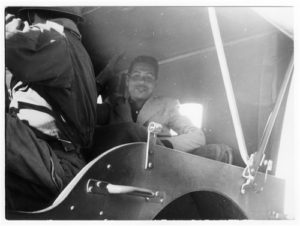
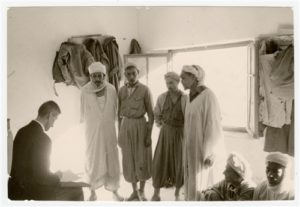
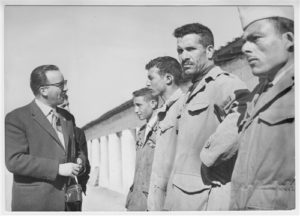

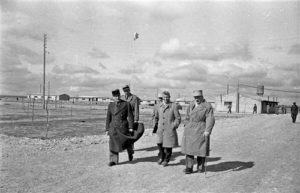
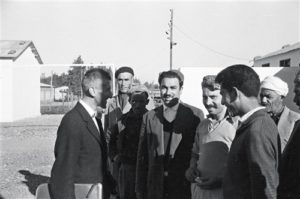
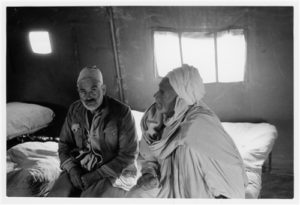
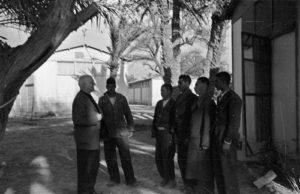
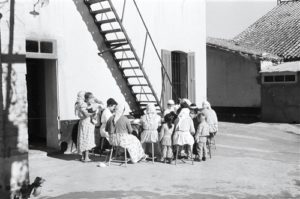







Comments